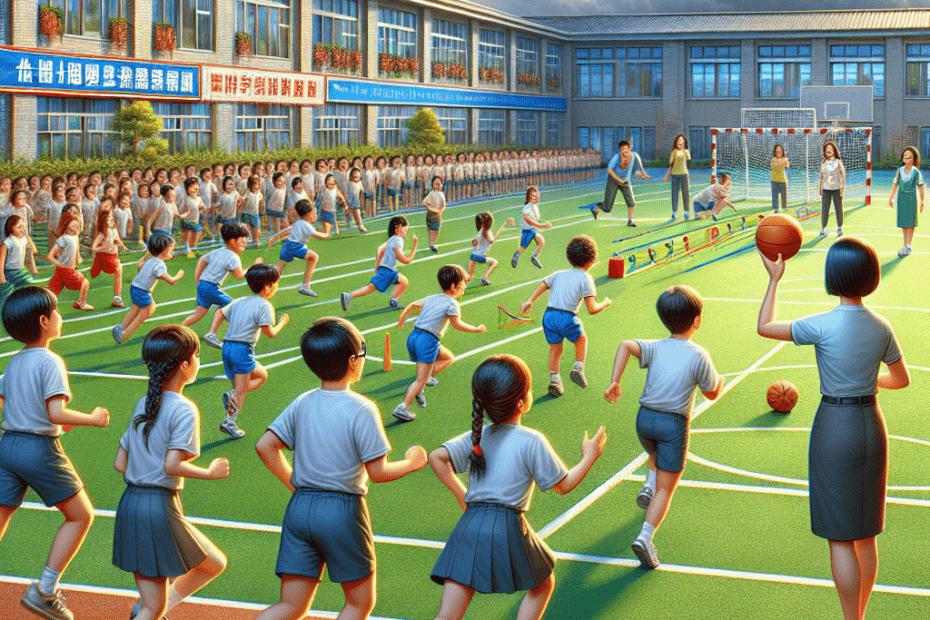“`html
Understanding the Significance of PE Curriculum for Elementary Students
In recent years, the PE curriculum for elementary schools has gained significant attention as educators and parents recognize its critical role in the holistic development of children. Physical Education (PE) is not just about sports or exercises; it is about teaching children the significance of a healthy lifestyle, fostering teamwork, and improving their motor skills.
The Role of PE in Elementary Schools
PE curricula in elementary schools are designed to introduce students to a variety of physical activities that promote health and well-being. With increasing concerns about childhood obesity and sedentary lifestyles, it is crucial for schools to implement effective PE programs. According to a study by the Centers for Disease Control and Prevention (CDC), approximately 19.3% of children and adolescents in the United States are affected by obesity. These statistics emphasize the need for regular physical activity starting from a young age.
Key Benefits of a Well-Structured PE Curriculum
Integrating a strong PE curriculum in elementary schools offers numerous benefits, such as:
- Improved Physical Health: Regular physical activity helps in maintaining healthy body weight, strengthening bones and muscles, and enhancing cardiovascular fitness.
- Mental Health Benefits: Exercise is known to reduce symptoms of anxiety and depression, which are increasingly affecting young children.
- Development of Social Skills: PE classes encourage teamwork, communication, and leadership skills, which are vital for social interaction.
- Better Academic Performance: Studies suggest that physical activity can positively affect concentration, memory, and classroom behavior.
Components of an Effective PE Curriculum
An effective PE curriculum should include a variety of components to cater to diverse student needs and abilities. These components may include:
| Component | Description |
|---|---|
| Fitness Education | Focuses on teaching students the basics of physical fitness and the importance of maintaining an active lifestyle. |
| Motor Skill Development | Helps students develop coordination, balance, and agility through activities such as running, jumping, and throwing. |
| Health and Wellness | Includes lessons on nutrition, personal health, and the benefits of physical activity. |
| Individual and Team Activities | Encourages participation in various sports and games to promote teamwork. |
| Inclusive Practices | Makes sure all students, regardless of ability, can participate and benefit from PE classes. |
Challenges Faced by PE Curriculum in Elementary Schools
Despite its importance, the implementation of the PE curriculum in elementary schools faces several challenges:
- Limited Resources: Many schools lack adequate facilities and equipment for a comprehensive PE program.
- Time Constraints: With a focus on academic testing, schools often reduce PE class time to allocate more time to subjects like mathematics and science.
- Inadequate Training: Teachers may lack the training or understanding of how to effectively deliver a PE curriculum.
Key Takeaways
A well-rounded PE curriculum offers immense benefits for children, emphasizing physical health, mental well-being, and social skills. Despite challenges like limited resources, it remains crucial for schools to advocate for and integrate more comprehensive physical education programs.
Conclusion
Given the growing evidence of the benefits of physical education, it’s vital that schools prioritize a strong PE curriculum for elementary students. Not only does it contribute to the physical and mental well-being of children, but it also prepares them for a balanced and active lifestyle, fostering a mindset that values health throughout their lives.
FAQ
- Why is PE important in elementary schools?
PE is essential as it fosters physical fitness, enhances social skills, and supports mental health and academic success.
- How often should students have PE classes?
The CDC recommends at least 60 minutes of physical activity daily, including in-school PE classes.
- What are some activities included in the PE curriculum?
Activities can range from basic exercises and sports to creative play and dance.
- How can parents support their child’s physical education?
Parents can encourage active play after school and participate in community or family sports activities.
- What challenges do PE teachers face in schools?
Challenges include insufficient resources, time constraints, and a lack of professional development opportunities.
“`
